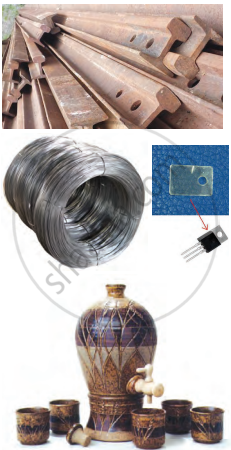Topics
Map Work
Interpretation of Topographical Maps
- Map as a Tool
- Uses of Maps
- The Role of Standard Signs and Symbols in Map Interpretation
- Types of Maps
- Topographic or Ordnance Survey Maps
- Grid Reference
- Types of Grid References
- National Grid Reference
Contours
- Representation of Relief Features
- Contour
- Contour Interval
- Identification of Landforms Marked by Contours
- Drawing of Contours and Their Cross Sections
- Conventional Signs and Symbols
- Features on a Topo-sheet
Geography of India
Scales and Direction
- Map Scale
- Types of Scale
- Measuring Distance on the Map Using Scales
- Map - Direction
Map Reading and Interpretation
- Map Reading
- Primary Information or Marginal Information
- Relief Features
- Relationship Between Physical Features and Human Activities
- Analysis of Topo-sheet No. G43S7
- Analysis of Topo-sheet No. G43S10
Map of India
- Map of India
- Mountains, Peaks, Passes, and Plateaus
- Plains
- Desert
- Rivers and Water Bodies
- Indian - Location, Size and Extent
- Direction of Winds
- Distribution of Minerals and Ores
- Soil Distribution
- Indian Cities
- Distribution of Population
Location, Extent and Physical Features
- India: a Subcontinent
- Indian - Location, Size and Extent
- India’s Land and Water Frontiers
- India and the World
- Physical Features of India
- Physical Divisions of India
- The North Indian Mountains
- The Himalayas
- Characteristics of Himalayas
- Significance of the Great Northern Wall
- North Indian Plains
- Significance of the Northern Indian Plains
- The Peninsular Indian Plateau
- Drainage Systems in the Peninsular India
- Significance of the Peninsular Plateau
- The Indian Coastal Plains
- Significance of the Coastal Plains
- The Indian Islands
Climate
Soil Resources
- Introduction to Soils
- Types of Soils in India
- Alluvial Soil
- Black Soil
- Red Soil
- Laterite Soils
- Soil Erosion
- Causes of Soil Erosion
- Prevention of Soil Erosion
- Soil Conservation
- Types of Soil
Natural Vegetation
- Natural Vegetation
- Importance of Forest
- Natural Vegetation of India
- Tropical Evergreen or Rain Forests
- Tropical Deciduous Forest
- Tropical Thorn Forests and Scrubs
- Mangrove Forests (Tidal Forest)
- Mountain or Montane Forest
- Correlation of the Natural Vegetation (Forest) with the Environment
- Forest Conservation
- Measures of Forest Conservation
Water Resources
- Sources of Water Resources
- Need for Conservation and Management of Water
- Water Conservation Practices
- Irrigation in India
- Sources of Irrigation in India
- Well Irrigation
- Tubewell Irrigation
- Canal Irrigation
- Tank Irrigation
- Modern Irrigation Methods
- Drawbacks of Conventional Methods of Irrigation
Mineral Resources
- Mineral Resources
- Mineral Resource - Iron Ore
- Mineral Resource - Manganese
- Mineral Resource - Copper
- Mineral Resource - Bauxite
Conventional Sources of Energy
- Conventional Sources of Energy
- Non-crystalline/Amorphous Forms: Coal
- Petroleum
- Oil Refineries
- Natural Gas
- Concept of Hydel Power
Non-conventional Sources of Energy
- Solar Energy
- Tidal Energy
- Geothermal Energy
- Nuclear Power
- Biogas Plant
Agriculture - I
- Concept of Indian Agriculture (Importance, Problems and Reforms)
- Types of Farming
Agriculture - II: Food Crops
- Concept of Agricultural Seasons (Rabi, Kharif, Zayad).
- Climatic Conditions of Crops
- Concept of Soil Requirements
- Methods of Cultivation of Crops
- Processing and Distribution of the Crops
Agriculture - III: Cash Crops (1)
- Cash Crops
- Climatic Conditions of Crops
- Concept of Soil Requirements
- Methods of Cultivation of Crops
- Processing and Distribution of the Crops
Agriculture - IV: Cash Crops (2)
- Climatic Conditions of Crops
- Concept of Soil Requirements
- Methods of Cultivation of Crops
- Processing and Distribution of the Crops
Manufacturing Industries (Agro-based)
- Industrialisation in India
- Factors Affecting Location of Industries
- Classification of Industries
- Major Industrial Regions:
- Agro-Based Industries
- Cotton Textile
- Silk Textile Industry
Mineral Based Industry
- Mineral Based Industry – Iron and Steel (Tisco, Bhilai, Rourkela,Vishakhapatnam)
- Petrochemical Industry
- Electronics
Transport
- Importance and Modes Transport - Roadways, Railways, Airways and Waterways
- Advantages and Disadvantages of Transport
Waste Management - I: Impact of Waste Accumulation
- Sources of Waste
- Impact of Waste Accumulation - Spoilage of Landscape
- Impact of Waste Accumulation - Pollution
- Impact of Waste Accumulation - Health Hazards
- Effect on Terrestrial, Aquatic (Fresh Water and Marine) Life
- Need for Waste Management
- Greenhouse Effect and Global Warming
- Acid Rain
- Soil Health
Waste Management - II: Safe Disposal of Waste
- Methods of Safe Disposal - Segregation, Dumping and Composting
- Need and Methods for Reducing, Reusing and Recycling Waste.
Some important minerals and ores:
|
Mineral/Ore |
Description |
Uses |
|---|---|---|
|
Iron Ore |
Impure form of iron found in nature. Types include magnetite, haematite, limonite, and siderite. |
Used to make items ranging from pins to large machinery, such as farming tools and railway tracks. |
|
Manganese |
Found as carbonate, silicate, or oxide. |
Used in medicines, to give pink colour to glass and in electrical appliances. |
| Bauxite | The most important ore of aluminium, containing 55% aluminium oxide. | Ideal for making aeroplanes, vehicles, and electric wires due to its low weight and high conductivity of heat and electricity. |
| Copper | Often found mixed with iron and other minerals. | A great conductor of electricity, used to make electric wires, radios, phones, vehicles, kitchen utensils, and statues. |
| Mica | A mineral that is a bad conductor of electricity. Its value depends on the thickness of its layers. | Used in Ayurvedic medicines, dyes, electric equipment, and wireless communication devices. |

Uses of minerals
If you would like to contribute notes or other learning material, please submit them using the button below.
